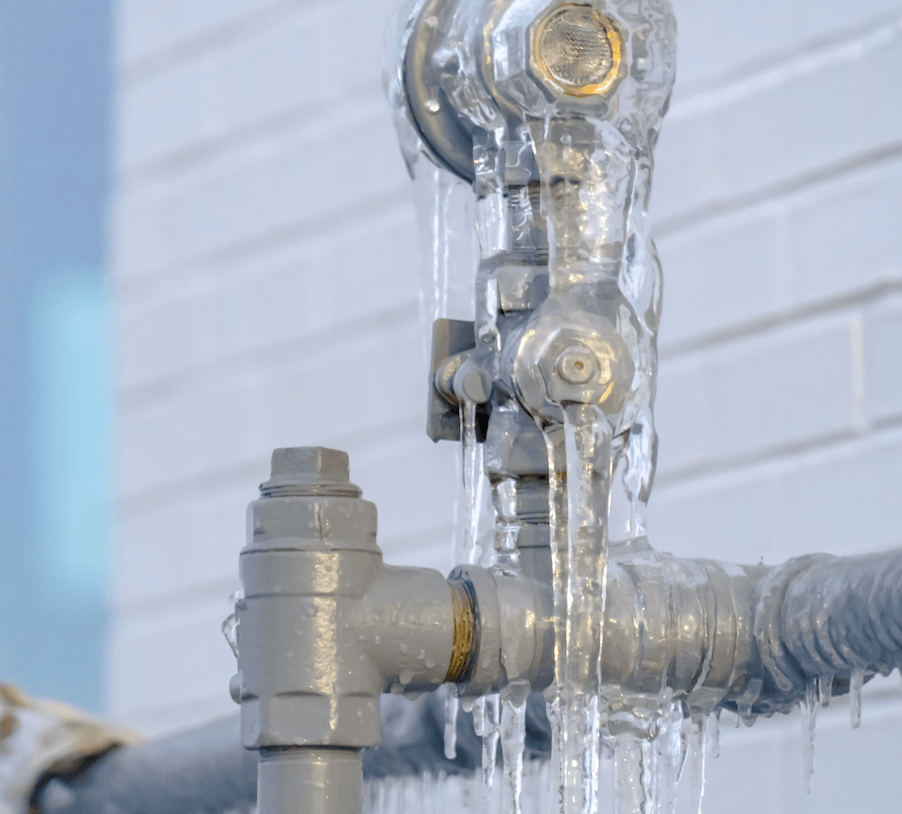Important Advice to Prevent Frozen Plumbing in Winter: Expert Insights
Important Advice to Prevent Frozen Plumbing in Winter: Expert Insights
Blog Article
Just how do you feel about How to prepare your home plumbing for winter weather?

Winter can wreak havoc on your plumbing, especially by freezing pipelines. Here's how to prevent it from happening and what to do if it does.
Intro
As temperature levels drop, the danger of icy pipes boosts, potentially resulting in pricey fixings and water damage. Understanding exactly how to avoid frozen pipes is important for property owners in cold environments.
Prevention Tips
Shielding prone pipes
Cover pipes in insulation sleeves or utilize heat tape to secure them from freezing temperatures. Focus on pipelines in unheated or exterior areas of the home.
Home heating techniques
Keep indoor rooms effectively warmed, especially locations with plumbing. Open cabinet doors to permit warm air to flow around pipes under sinks.
Just how to recognize frozen pipelines
Search for lowered water circulation from faucets, uncommon smells or noises from pipelines, and visible frost on revealed pipelines.
Long-Term Solutions
Architectural adjustments
Take into consideration rerouting pipelines far from exterior wall surfaces or unheated locations. Add additional insulation to attic rooms, cellars, and crawl spaces.
Upgrading insulation
Invest in top quality insulation for pipes, attic rooms, and wall surfaces. Appropriate insulation aids keep regular temperature levels and minimizes the danger of icy pipes.
Protecting Outside Pipes
Garden pipes and outdoor faucets
Separate and drain garden hoses before winter. Mount frost-proof faucets or cover outside taps with protected caps.
Comprehending Frozen Pipes
What causes pipes to freeze?
Pipelines ice up when revealed to temperature levels listed below 32 ° F (0 ° C) for prolonged periods. As water inside the pipelines freezes, it broadens, putting pressure on the pipeline wall surfaces and possibly creating them to rupture.
Risks and problems
Icy pipes can bring about supply of water disturbances, building damages, and pricey repair work. Ruptured pipes can flooding homes and trigger considerable structural damage.
Signs of Frozen Water Lines
Determining frozen pipelines early can avoid them from bursting.
What to Do If Your Pipes Freeze
Immediate activities to take
If you presume frozen pipelines, maintain faucets open up to ease stress as the ice thaws. Use a hairdryer or towels soaked in hot water to thaw pipelines gradually.
Verdict
Preventing frozen pipes calls for aggressive procedures and quick reactions. By recognizing the causes, indications, and safety nets, house owners can safeguard their pipes during cold weather.
5 Ways to Prevent Frozen Pipes
Drain Outdoor Faucets and Disconnect Hoses
First, close the shut-off valve that controls the flow of water in the pipe to your outdoor faucet. Then, head outside to disconnect and drain your hose and open the outdoor faucet to allow the water to completely drain out of the line. Turn off the faucet when done. Finally, head back to the shut-off valve and drain the remaining water inside the pipe into a bucket or container. Additionally, if you have a home irrigation system, you should consider hiring an expert to clear the system of water each year.
Insulate Pipes
One of the best and most cost-effective methods for preventing frozen water pipes is to wrap your pipes with insulation. This is especially important for areas in your home that aren’t exposed to heat, such as an attic. We suggest using foam sleeves, which can typically be found at your local hardware store.
Keep Heat Running at 65
Your pipes are located inside your walls, and the temperature there is much colder than the rest of the house. To prevent your pipes from freezing, The Insurance Information Institute suggests that you keep your home heated to at least 65 degrees, even when traveling. You may want to invest in smart devices that can keep an eye on the temperature in your home while you’re away.
Leave Water Dripping
Moving water — even a small trickle — can prevent ice from forming inside your pipes. When freezing temps are imminent, start a drip of water from all faucets that serve exposed pipes. Leaving a few faucets running will also help relieve pressure inside the pipes and help prevent a rupture if the water inside freezes.
Open Cupboard Doors
Warm your kitchen and bathroom pipes by opening cupboards and vanities. You should also leave your interior doors ajar to help warm air circulate evenly throughout your home.

We had been shown that report on Prevent Frozen Pipes through someone on our other website. Those who liked our blog entry plz make sure you remember to share it. We truly appreciate reading our article about How to prepare your home plumbing for winter weather.
Check It Out Report this page